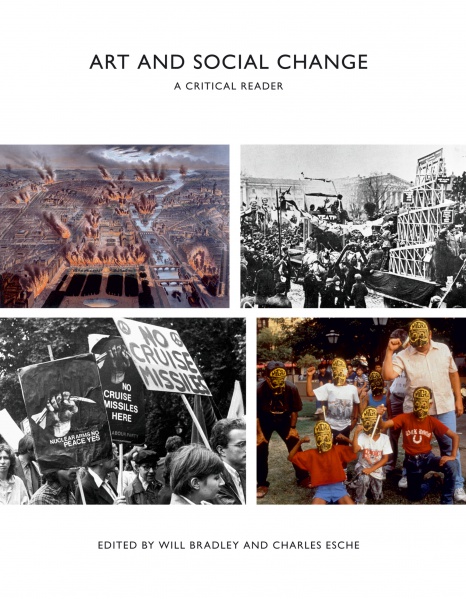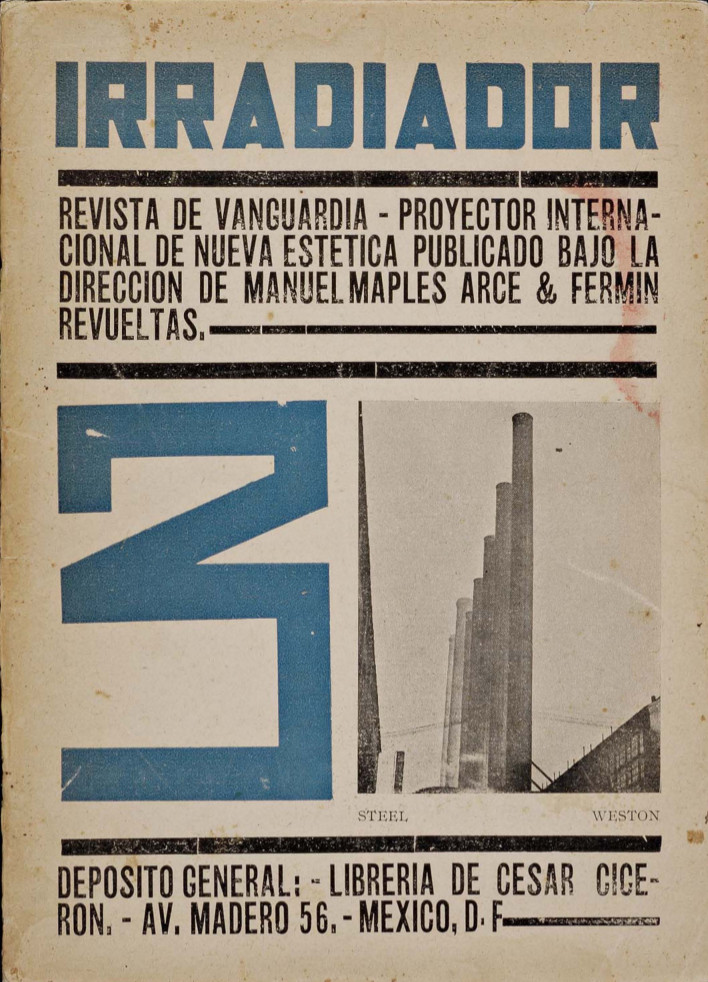Will Bradley, Charles Esche (eds.): Art and Social Change: A Critical Reader (2007)
Filed under book | Tags: · aesthetics, art, art history, art theory, avant-garde, bauhaus, constructivism, dada, politics, revolution, situationists, social movements, subversion, zapatistas

“The desire to change the world has often led artists to align themselves with wider social movements and to break with established institutions of art. This reader gathers together an international selection of artists’ proposals, manifestos, theoretical texts and public declarations that focus on the question of political engagement and the possibility of social change. The approaches represented are many and diverse, from Gustave Courbet’s involvement in the Paris Commune and the socialist art theory of William Morris to the hybrid activist practice associated with the twenty-first century ‘movement of movements’; from the political commitments of the Modernist avant-gardes to the rejections of Modernism in favour of protest, critique, utopian social experiment or revolutionary propaganda. Six specially commissioned essays – by Geeta Kapur, Lucy Lippard, John Milner, Gerald Raunig, Marina Vishmidt and Tirdad Zolghadr – further explore both the historical context and the contemporary situation.”
Publisher Tate Publishing, in association with Afterall, London, 2007
ISBN 9781854376268
479 pages
Commentary: Marco Deseriis and Brian Holmes (Mute).
Comments (3)Irradiador: revista de vanguardia, 1–3 (1923) [Spanish]
Filed under magazine | Tags: · art, avant-garde, concrete poetry, estridentismo, literature, mexico, poetry, politics


“The Irradiador journal was edited by the artist Fermín Revueltas (1902-1935) and was the major early voice for the Mexican avant-garde movement called Estridentismo. The journal was short-lived, and only saw three issues: September, October, and November of 1923. Still, it saw contributions by major players in the international avant-gardes, all the while staying carefully attuned to Estridentismo‘s present social concerns for post-revolutionary Mexico.
The journal’s foremost concern was the propagation of the new aesthetics in Mexico, and furthering the cultural project of the Mexican revolution. Irradiador, it promised in its motto, ‘Will make reactionaries lose sleep, and will affirm all the anxieties of the present hour.’
The journal featured woodcuts, sculptures, paintings, poems, and articles on subjects as diverse as archaeology and the petroleum industry. Its first issue contains a calligram by none other than the muralist Diego Rivera–an important endorsement for a nascent avant-garde movement like Estridentismo. It also contained a poem by the Argentine Jorge Luis Borges, which bolsters the international credibility of the Mexican movement.
Other important poets, writers, and artists to be featured over the three issues: Salvador Gallardo, Germán List Arzubide, Kyn Tanya, Juan José Tablada, and the U.S. photographer Edward Weston, whom the magazine inexplicably calls ‘Dwad Weston’ (Irradiador 3, inside cover).
The magazine’s aesthetic is a combination of Mexican images–such as Charlot’s woodcuts of indigenous workers–and modern technology, promoting the ‘Jazz Band, petroleum, New York. The city all polarized crackling in the radiotelephonic antennas…’ (‘Inaugural Irradiation’, 1).” (sourced from Kelly Scott Franklin’s blog)
Scans via The Jean Charlot Collection & the University of Hawaii at Manoa
Commentary by Evorio Escalante (video, 3 min, in Spanish)
Comment (0)Matthew Fuller, Andrew Goffey: Evil Media (2012)
Filed under book | Tags: · algorithm, art, artificial intelligence, business, code, computing, data, database, event, governance, information, interaction, interface, knowledge, labour, language, machine, management, market, media, media theory, memory, military, networks, philosophy, political theory, politics, power, programming, software

“Evil Media develops a philosophy of media power that extends the concept of media beyond its tried and trusted use in the games of meaning, symbolism, and truth. It addresses the gray zones in which media exist as corporate work systems, algorithms and data structures, twenty-first century self-improvement manuals, and pharmaceutical techniques. Evil Media invites the reader to explore and understand the abstract infrastructure of the present day. From search engines to flirting strategies, from the value of institutional stupidity to the malicious minutiae of databases, this book shows how the devil is in the details.
The title takes the imperative “Don’t be evil” and asks, what would be done any differently in contemporary computational and networked media were that maxim reversed.
Media here are about much more and much less than symbols, stories, information, or communication: media do things. They incite and provoke, twist and bend, leak and manage. In a series of provocative stratagems designed to be used, Evil Media sets its reader an ethical challenge: either remain a transparent intermediary in the networks and chains of communicative power or become oneself an active, transformative medium.”
Publisher MIT Press, 2012
ISBN 0262304406, 9780262304405
235 pages
Review: Nicholas Holm (Media Int’l AU, 2013), Neural (2013).
Evil media on Monoskop wiki
PDF (updated on 2024-4-13)
HTML (added on 2015-8-28)
See also YoHa, et al., Evil Media Distribution Centre, 2013.
Comments (2)
